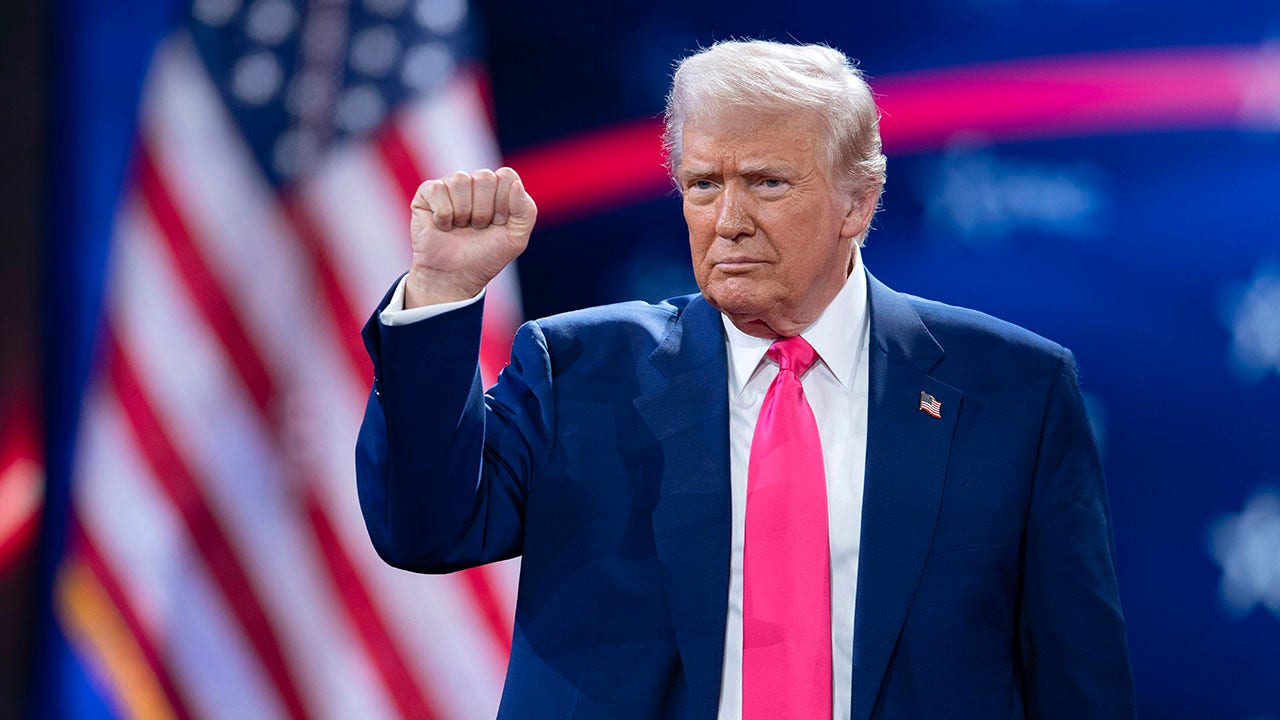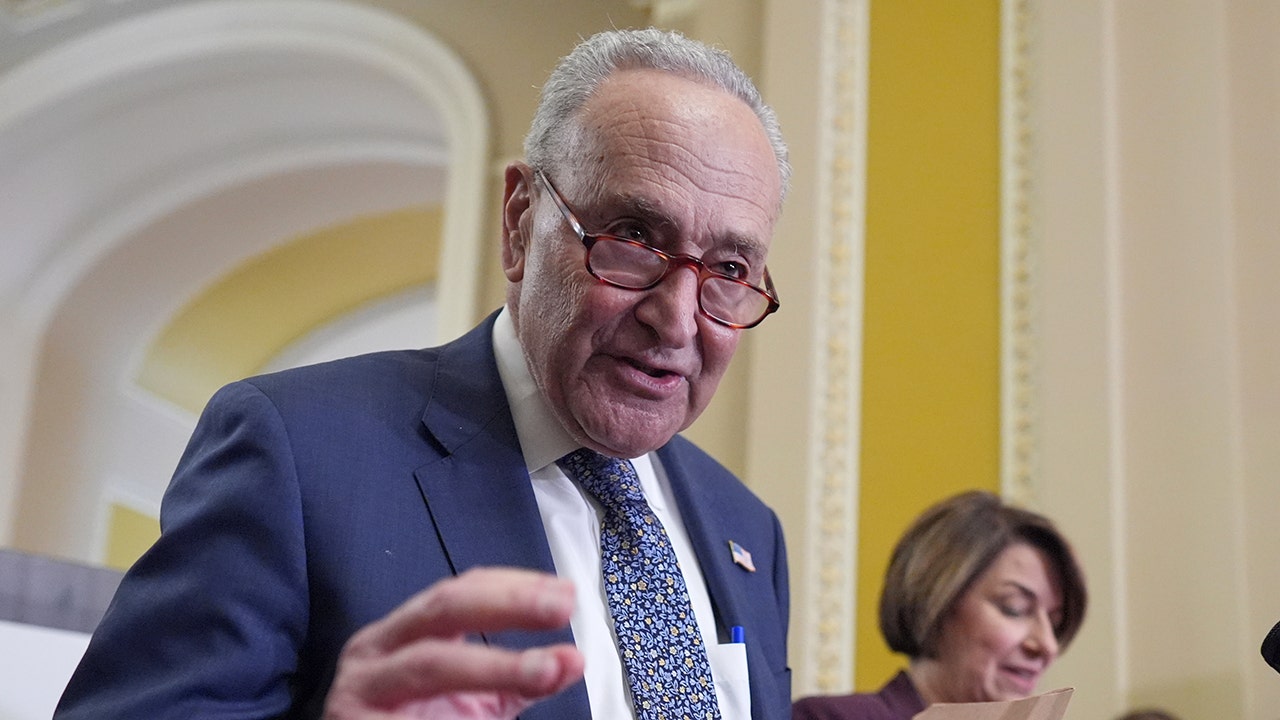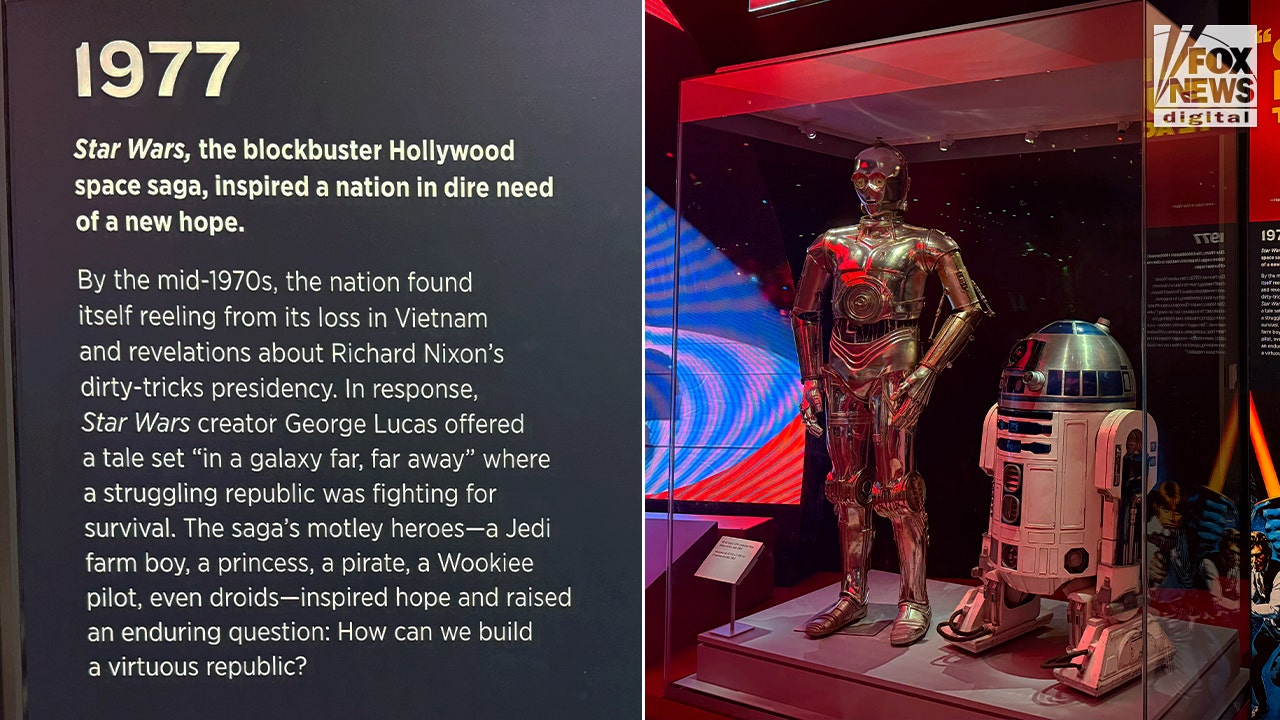Business
The Optimist’s Guide to Artificial Intelligence and Work

It’s easy to fear that the machines are taking over: Companies like IBM and the British telecommunications company BT have cited artificial intelligence as a reason for reducing head count, and new tools like ChatGPT and DALL-E make it possible for anyone to understand the extraordinary abilities of artificial intelligence for themselves. One recent study from researchers at OpenAI (the start-up behind ChatGPT) and the University of Pennsylvania concluded that for about 80 percent of jobs, at least 10 percent of tasks could be automated using the technology behind such tools.
“Everybody I talk to, supersmart people, doctors, lawyers, C.E.O.s, other economists, your brain just first goes to, ‘Oh, how can generative A.I. replace this thing that humans are doing?’” said Erik Brynjolfsson, a professor at the Stanford Institute for Human-Centered AI.
But that’s not the only option, he said. “The other thing that I wish people would do more of is think about what new things could be done now that was never done before. Obviously that’s a much harder question.” It is also, he added, “where most of the value is.”
How technology makers design, business leaders use and policymakers regulate A.I. tools will determine how generative A.I. ultimately affects jobs, Brynjolfsson and other economists say. And not all the choices are necessarily bleak for workers.
A.I. can complement human labor rather than replace it. Plenty of companies use A.I. to automate call centers, for instance. But a Fortune 500 company that provides business software has instead used a tool like ChatGPT to give its workers live suggestions for how to respond to customers. Brynjolfsson and his co-authors of a study compared the call center employees who used the tool to those who didn’t. They found that the tool boosted productivity by 14 percent on average, with most of the gains made by low-skilled workers. Customer sentiment was also higher and employee turnover lower in the group that used the tool.
David Autor, a professor of economics at the Massachusetts Institute of Technology, said that A.I. could potentially be used to deliver “expertise on tap” in jobs like health care delivery, software development, law, and skilled repair. “That offers an opportunity to enable more workers to do valuable work that relies on some of that expertise,” he said.
Workers can focus on different tasks. As A.T.M.s automated the tasks of dispensing cash and taking deposits , the number of bank tellers increased, according to an analysis by James Bessen, a researcher at the Boston University School of Law. This was partly because while bank branches required fewer workers, they became cheaper to open — and banks opened more of them. But banks also changed the job description. After A.T.M.s, tellers focused less on counting cash and more on building relationships with customers, to whom they sold products like credit cards. Few jobs can be completely automated by generative A.I. But using an A.I. tool for some tasks may free up workers to expand their work on tasks that can’t be automated.
New technology can lead to new jobs. Farming employed nearly 42 percent of the work force in 1900, but because of automation and advances in technology, it accounted for just 2 percent by 2000. The huge reduction in farming jobs didn’t result in widespread unemployment. Instead, technology created a lot of new jobs. A farmer in the early 20th century would not have imagined computer coding, genetic engineering or trucking. In an analysis that used census data, Autor and his co-authors found that 60 percent of current occupational specialties did not exist 80 years ago.
Of course, there’s no guarantee that workers will be qualified for new jobs, or that they’ll be good jobs. And none of this just happens, said Daron Acemoglu, an economics professor at M.I.T. and a co-author of “Power and Progress: Our 1,000-Year Struggle Over Technology & Prosperity.”
“If we make the right choices, then we do create new types of jobs, which is crucial for wage growth and also for truly reaping the productivity benefits,” Acemoglu said. “But if we do not make the right choices, much less of this can happen.” — Sarah Kessler
IN CASE YOU MISSED IT
Martha’s model behavior. The lifestyle entrepreneur Martha Stewart became the oldest person to be featured on the cover of Sports Illustrated’s swimsuit issue this week. Stewart, 81, told The Times that it was a “large challenge” to have the confidence to pose but that two months of Pilates had helped. She isn’t the first person over 60 to have the distinction: Maye Musk, the mother of Elon Musk, graced the cover last year at the age of 74.
TikTok block. Montana became the first state to ban the Chinese short video app, barring app stores from offering TikTok within its borders starting Jan. 1. The ban is expected to be difficult to enforce, and TikTok users in the state have sued the government, saying the measure violates their First Amendment rights and giving a glimpse of the potential blowback if the federal government tries to block TikTok nationwide.
Banker blame game. Greg Becker, the ex-C.E.O. of Silicon Valley Bank, blamed “rumors and misconceptions” for a run on deposits in his first public comments since the lender collapsed in March. Becker and former top executives of the failed Signature Bank also told a Senate committee investigating their role in the collapse of the banks that they would not give back millions of dollars in pay.
A brief history of tech C.E.O.s seeking constraints
When OpenAI’s chief executive, Sam Altman, testified in Congress this week and called for regulation of generative artificial intelligence, some lawmakers hailed it as a “historic” move. In fact, asking lawmakers for new rules is a move straight out of the tech industry playbook. Silicon Valley’s most powerful executives have long gone to Washington to demonstrate their commitment to rules in an attempt to shape them while simultaneously unleashing some of the world’s most powerful and transformative technologies without pause.
One reason: A federal rule is much easier to manage than different regulations in different states, Bruce Mehlman, a political consultant and former technology policy official in the Bush administration, told DealBook. Clearer regulations also give investors more confidence in a sector, he added.
The strategy sounds sensible, but if history is a useful guide, the reality can be messier than the rhetoric:
-
In December 2021, Sam Bankman-Fried, founder of the failed crypto exchange FTX, was one of six executives to testify about digital assets in the House and call for regulatory clarity. His company had just submitted a proposal for a “unified joint regime,” he told lawmakers. A year later, Bankman-Fried’s businesses were bankrupt, and he was facing criminal fraud and illegal campaign contribution charges.
-
In 2019, Facebook founder Mark Zuckerberg wrote an opinion piece in The Washington Post, “The Internet Needs New Rules,” based on failures in content moderation, election integrity, privacy and data management at the company. Two years later, independent researchers found that misinformation was more rampant on the platform than in 2016, even though the company had spent billions trying to stamp it out.
-
In 2018, the Apple chief Tim Cook said he was generally averse to regulation but supported more strict data privacy rules, saying, “It’s time for a set of people to think about what can be done.” But to maintain its business in China, one of its biggest markets, Apple has largely ceded control of customer data to the government as part of its requirements to operate there.
Buzzword of the week: ‘Algospeak’
Platforms like TikTok, Facebook, Instagram and Twitter use algorithms to identify and moderate problematic content. To avert these digital moderators and allow free exchange about taboo topics, a linguistic code has developed. It’s called “algospeak.”
“A linguistic arms race is raging online — and it isn’t clear who’s winning,” writes Roger J. Kreuz, a psychology professor at the University of Memphis. Posts about sensitive issues like politics, sex or suicide can be flagged by algorithms and taken down, leading to the use of creative misspellings and stand-ins, like “seggs” and “mascara” for sex, “unalive” for death and “cornucopia” for homophobia. There is a history of responding to prohibitions with code, Kruz notes, such as 19th-century Cockney rhyming slang in England or “Aesopian,” an allegorical language used to circumvent censorship in Tsarist Russia.
Algorithms aren’t alone in not picking up on the code. The euphemisms and misspellings are particularly ubiquitous among marginalized communities. But the hidden language also sometimes eludes humans, leading to potentially fraught miscommunications online. In February, the celebrity Julia Fox found herself in an awkward exchange with a victim of sexual assault after misunderstanding a post about “mascara” and had to issue a public apology for responding inappropriately to what she thought was a discussion about makeup.
Thanks for reading!
We’d like your feedback. Please email thoughts and suggestions to dealbook@nytimes.com.

Business
Companies keep slashing jobs. How worried should workers be about AI replacing them?

Tech companies that are cutting jobs and leaning more on artificial intelligence are also disrupting themselves.
Amazon’s Chief Executive Andy Jassy said last month that he expects the e-commerce giant will shrink its workforce as employees “get efficiency gains from using AI extensively.”
At Salesforce, a software company that helps businesses manage customer relationships, Chief Executive Marc Benioff said last week that AI is already doing 30% to 50% of the company’s work.
Other tech leaders have chimed in. Earlier this year, Anthropic, an AI startup, flashed a big warning: AI could wipe out more than half of all entry-level white-collar jobs in the next one to five years.
Ready or not, AI is reshaping, displacing and creating new roles as technology’s impact on the job market ripples across multiple sectors. The AI frenzy has fueled anxiety from workers who fear their jobs could be automated. Roughly half of U.S. workers are worried about how AI may be used in the workplace in the future, and few think AI will lead to more job opportunities in the long run, according to a Pew Research Center report.
The heightened fear comes as major tech companies, such as Microsoft, Intel, Amazon and Meta cut workers, push for more efficiency and promote their AI tools. Tech companies have rolled out AI-powered features that can generate code, analyze data, develop apps and help complete other tedious tasks.
“AI isn’t just taking jobs. It’s really rewriting the rule book on what work even looks like right now,” said Robert Lucido, senior director of strategic advisory at Magnit, a company based in Folsom, Calif., that helps tech giants and other businesses manage contractors, freelancers and other contingent workers.
Disruption debated
Exactly how big of a disruption AI will have on the job market is still being debated. Executives for OpenAI, the maker of popular chatbot ChatGPT, have pushed back against the prediction that a massive white-collar job bloodbath is coming.
“I do totally get not just the anxiety, but that there is going to be real pain here, in many cases,” said Sam Altman, chief executive of OpenAI, at an interview with “Hard Fork,” the tech podcast from the New York Times. ”In many more cases, though, I think we will find that the world is significantly underemployed. The world wants way more code than can get written right now.”
As new economic policies, including those around tariffs, create more unease among businesses, companies are reining in costs while also being pickier about whom they hire.
“They’re trying to find what we call the purple unicorns rather than someone that they can ramp up and train,” Lucido said.
Before the 2022 launch of ChatGPT — a chatbot that can generate text, images, code and more —tech companies were already using AI to curate posts, flag offensive content and power virtual assistants. But the popularity and apparent superpowers of ChatGPT set off a fierce competition among tech companies to release even more powerful generative AI tools. They’re racing ahead, spending hundreds of billions of dollars on data centers, facilities that house computing equipment such as servers used to process the trove of information needed to train and maintain AI systems.
Economists and consultants have been trying to figure out how AI will affect engineers, lawyers, analysts and other professions. Some say the change won’t happen as soon as some tech executives expect.
“There have been many claims about new technologies displacing jobs, and although such displacement has occurred in the past, it tends to take longer than technologists typically expect,” economists for the U.S. Bureau of Labor Statistics said in a February report.
AI can help develop, test and write code, provide financial advice and sift through legal documents. The bureau, though, still projects that employment of software developers, financial advisors, aerospace engineers and lawyers will grow faster than the average for all occupations from 2023 to 2033. Companies will still need software developers to build AI tools for businesses or maintain AI systems.
Worker bots
Tech executives have touted AI’s ability to write code. Meta Chief Executive Mark Zuckerberg has said that he thinks AI will be able to write code like a mid-level engineer in 2025. And Microsoft Chief Executive Satya Nadella has said that as much as 30% of the company’s code is written by AI.
Other roles could grow more slowly or shrink because of AI. The Bureau of Labor Statistics expects employment of paralegals and legal assistants to grow slower than the average for all occupations while roles for credit analysts, claims adjusters and insurance appraisers to decrease.
McKinsey Global Institute, the business and economics research arm of the global management consulting firm McKinsey & Co., predicts that by 2030 “activities that account for up to 30 percent of hours currently worked across the US economy could be automated.”
The institute expects that demand for science, technology, engineering and mathematics roles will grow in the United States and Europe but shrink for customer service and office support.
“A large part of that work involves skills, which are routine, predictable and can be easily done by machines,” said Anu Madgavkar, a partner with the McKinsey Global Institute.
Although generative AI fuels the potential for automation to eliminate jobs, AI can also enhance technical, creative, legal and business roles, the report said. There will be a lot of “noise and volatility” in hiring data, Madgavkar said, but what will separate the “winners and losers” is how people rethink their work flows and jobs themselves.
Tech companies have announced 74,716 cuts from January to May, up 35% from the same period last year, according to a report from Challenger, Gray & Christmas, a firm that offers job search and career transition coaching.
Tech companies say they’re reducing jobs for various reasons.
Autodesk, which makes software used by architects, designers and engineers, slashed 9% of its workforce, or 1,350 positions, this year. The San Francisco company cited geopolitical and macroeconomic factors along with its efforts to invest more heavily in AI as reasons for the cuts, according to a regulatory filing.
Other companies such as Oakland fintech company Block, which trimmed 8% of its workforce in March, told employees that the cuts were strategic not because they’re “replacing folks with AI.”
Diana Colella, executive vice president, entertainment and media solutions at Autodesk, said that it’s scary when people don’t know what their job will look like in a year. Still, she doesn’t think AI will replace humans or creativity but rather act as an assistant.
Companies are looking for more AI expertise. Autodesk found that mentions of AI in U.S. job listings surged in 2025 and some of the fastest-growing roles include AI engineer, AI content creator and AI solutions architect. The company partnered with analytics firm GlobalData to examine nearly 3 million job postings over two years across industries such as architecture, engineering and entertainment.
Workers have adapted to technology before. When the job of a door-to-door encyclopedia salesman was disrupted because of the rise of online search, those workers pivoted to selling other products, Colella said.
“The skills are still key and important,” she said. “They just might be used for a different product or a different service.”
Business
Why Kroger is closing 60 stores: 'One hit after another'

After a series of setbacks, Kroger’s recent decision to close 60 locations nationwide is the latest sign of distress for the grocer that operates more than 300 stores in California.
Kroger, the parent company of Ralphs and Food 4 Less, is reducing its footprint after the resignation of its chief executive and a failed merger with competing grocery giant Albertsons. The company faces a lawsuit related to the merger and also has been struggling with labor unrest.
Employees had been threatening to strike until the company reached a tentative agreement with the United Food and Commercial Workers union this week.
Based in Cincinnati, Kroger also owns Harris Teeter, King Soopers and Dillons. The company operates more than 2,700 stores under different brands across the country and offers fresh goods, some household items and pharmacy services.
“Instead of popping champagne and toasting to their merger, Kroger is instead just enduring one hit after another,” said Jeff Wells, lead editor at the trade publication Grocery Dive. “They’re still a pretty stable business, but they’re facing a lot in terms of challenges.”
Impending closures
Kroger announced late last month in its quarterly earnings report that it plans to close 60 stores over the next 18 months. The company did not disclose which locations would be shut down.
“We’re simplifying our business and reviewing areas that will not be meaningful to our future growth,” interim Chief Executive Ronald Sargent said in an earnings call. “Today, not all of our stores are delivering the sustainable results we need.”
Kroger temporarily paused routine store closures while the Albertsons merger was pending, Sargent said. The company normally closes about 30 stores per year, Melius Research analyst Jacob Aiken-Phillips said.
The company is on track to complete 30 major store projects this year and expects to accelerate store openings in 2026, Sargent said on the earnings call.
Competitive market
Kroger is under increasing pressure from competitors, experts said, some of which offer a wider range of items and convenient one-stop shops.
“Kroger faces this intensely competitive field in the grocery industry,” Wells said. “From Walmart to Costco to Whole Foods and Sprouts Farmers Market, everybody in the industry is kind of gunning for them.”
The Albertsons merger would have given Kroger the scale to compete with giants such as Walmart and Amazon, Aiken-Phillips said.
“After the merger failed, they had to reexamine their strategy and focus on how they can grow and compete without that scale,” he said. “That’s the major challenge right now.”
Kroger relies on pharmacy services, advertising and e-commerce for additional revenue, experts said. Although the company grew its e-commerce business 15% in the first quarter of this year, the business remains unprofitable.
A chief executive shuffle
Former Kroger CEO Rodney McMullen stepped down in March after an investigation into his personal conduct, the company announced. Sargent was appointed chairman of the board of directors and interim CEO.
Kroger did not share details of the investigation into McMullen. His “personal conduct, while unrelated to the business, was inconsistent with Kroger’s Policy on Business Ethics,” the company’s statement said.
“When he resigned, it threw a wrench in progressing the company because now you need a new leader to come in,” Aiken-Phillips said.
A failed merger
In 2022, Kroger agreed to buy Albertsons for $24.6 billion, a sale that would have been the largest supermarket merger in U.S. history.
The Federal Trade Commission, California and several other states sued to stop the merger, arguing that it would hobble competition in many parts of the country, leaving customers at the mercy of a newly formed behemoth and driving up prices. Kroger and Albertsons collectively own about 5,000 grocery stores.
In late 2024, Albertsons scrapped the deal after a federal judge in Oregon issued a preliminary injunction in the case. The high-stakes court battle centered on concerns that the megamerger would add to the financial woes of consumers who have grappled with the rising cost of food.
Albertsons also sued Kroger, claiming that the grocer didn’t do enough to win over regulators. Kroger has since countersued.
Ongoing labor unrest
In June, grocery workers at Albertsons and Kroger — numbering about 45,000 — voted to authorize a strike to protest what they called unfair labor practices. A walkout would have caused a major disruption for two of the nation’s largest grocery chains during the busiest season of the year.
The United Food and Commercial Workers union announced Thursday that it reached a tentative agreement with the two companies that would allow them to avoid a strike. The union will vote on whether to approve the agreement July 9-11.
“Following an intense 40 plus hour bargaining session that began on Friday morning, we’ve secured an agreement that addresses our priorities,” the union said in a statement.
The agreement includes higher wages, improved pension plans as well as health and welfare improvements, the union said. Kroger did not respond to requests for comment.
Business
See How Trump’s Big Bill Could Affect Your Taxes, Health Care and Other Finances

Congressional Republicans just passed President Trump’s sprawling domestic policy bill that extends and expands tax cuts, while slashing Medicaid, food benefits and clean energy initiatives to pay for them — but only partly. The bill favors the wealthy, and low-income Americans stand to lose the most.
What could the bill mean for your pocketbook? Answer these questions to learn more about the individual impacts of the wide-ranging legislation. (Your answers are not tracked by The Times.)
Jump to a section:
At the heart of the bill is a roughly $4 trillion tax cut that extends the cuts Republicans passed in 2017. Without this extension, most Americans would see a tax increase.
These tax cuts come at a cost. According to the Congressional Budget Office, the bill adds $3.3 trillion to the national debt over the next decade.
Do you pay federal income taxes?
Do you take the standard tax deduction?
Are you 65 or older?
Do you live in a high-tax state like California or New York?
Are you a tipped worker?
Do you receive overtime pay?
Do you plan to buy a car?
Do you pay interest on a mortgage?
Have you experienced a big loss because of a storm, fire or other disasters?
Do you donate to charity?
Do you earn more than $500,000 a year?
Do you own a business?
Do you own or are you considering buying firearms?
Are you a whaling captain or a fisher living in Alaska?
Despite reducing or eliminating certain safety net programs, the Trump administration has been exploring several options to encourage Americans to have more children, including tax cuts and other investments.
Do you have children?
Are you planning to have a baby soon?
Do you intend to adopt a child?
Will you inherit wealth or business worth $15 million or more soon?
To offset some of the tax cuts, the bill makes steep cuts to health care and food assistance benefits for low-income Americans.
Are you on Medicaid?
Do you use food stamps?
Do you have health insurance under Obamacare?
Do you have a health savings account, or want one?
The bill adds limits to student loan borrowing and makes changes to financial aid eligibility and uses.
Have you already taken or will soon take out federal loans for college?
Do you plan to borrow money for your child’s college education?
Do you hope to borrow money for graduate school?
Do you have a 529 savings account?
Are you filling out the FAFSA?
Do you plan to apply for a Pell Grant?
Do you or your children attend a university with a large endowment?
The bill rolls back tax credits for clean energy, a policy Mr. Trump campaigned on.
Are you planning to make energy-efficient home improvements?
Do you want to buy an electric or a plug-in hybrid vehicle?
The bill has prioritized additional funding for immigration enforcement, and specifically includes collecting more fees from certain noncitizens.
Are you a noncitizen without a green card?
Are you an immigrant who sends money abroad to friends or family?
Your results
|
1. Preserve existing tax brackets |
— |
|
2. Extend and increase standard tax deduction |
— |
|
3. Increase tax deductions for seniors |
— |
|
4. Increase cap on state and local tax deductions |
— |
|
5. Add tax deduction for income from tips |
— |
|
6. Add tax deduction for overtime income |
— |
|
7. Add tax deduction on auto loan interest |
— |
|
8. Preserve limit on mortgage interest deduction |
— |
|
9. Preserve restrictions on loss deduction |
— |
|
10. Add tax deduction for donating to charity |
— |
|
11. Extend alternative minimum tax exemption |
— |
|
12. Increase tax deductions for pass-through businesses |
— |
|
13. Eliminate a tax on silencers and certain firearms |
— |
|
14. Add tax breaks for Alaskan whalers and fishers |
— |
|
15. Increase child tax credit, with tightened rules |
— |
|
16. Deposit $1,000 into a “Trump account” for newborns |
— |
|
17. Make adoption tax credit refundable |
— |
|
18. Extend and increase estate tax exemption |
— |
|
19. Add work requirements for Medicaid |
— |
|
20. Add work requirements for food stamps |
— |
|
21. Tighten Obamacare rules |
— |
|
22. Expand HSA access to more people |
— |
|
23. Eliminate tax credits for low-emissions electricity sources |
— |
|
24. Eliminate tax credits for clean energy vehicles |
— |
|
25. Restructure student loan repayment programs |
— |
|
26. Limit Parent PLUS loan amounts |
— |
|
27. Limit graduate school loan amounts |
— |
|
28. Expand eligible 529 expenses |
— |
|
29. Remove some assets from financial aid calculations |
— |
|
30. Change eligiblity rules for Pell Grants |
— |
|
31. Increase taxes on university endowments |
— |
|
32. Add and increase immigration fees |
— |
|
33. Add a tax on money sent abroad |
— |
-

 News1 week ago
News1 week agoHow Every Senator Voted on the Iran War Powers Resolution
-

 Politics1 week ago
Politics1 week agoTrump's 'big, beautiful bill' faces Republican family feud as Senate reveals its final text
-

 Technology1 week ago
Technology1 week agoFacebook is starting to feed its Meta AI with private, unpublished photos
-

 Health1 week ago
Health1 week agoWhy Mariah Carey Doesn’t Use a Scale After Her 70-Lb Weight Loss
-
World1 week ago
Tech industry group sues Arkansas over new social media laws
-

 Science1 week ago
Science1 week agoAfter U.S. and Israeli Strikes, Could Iran Make a Nuclear Bomb?
-

 Business1 week ago
Business1 week agoCalifornia lawmakers approve expanded $750-million film tax credit program
-

 Politics1 week ago
Politics1 week agoSchumer to force Senate reading of Trump's entire 'big, beautiful bill'















